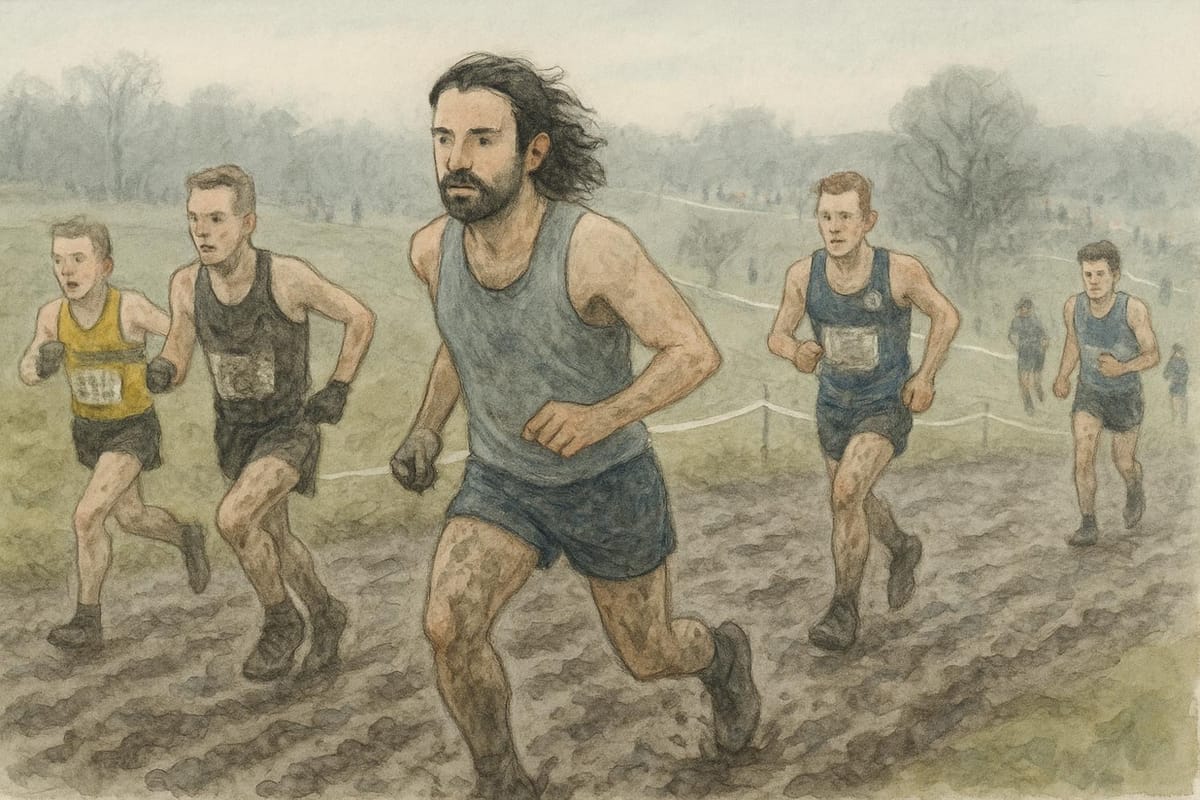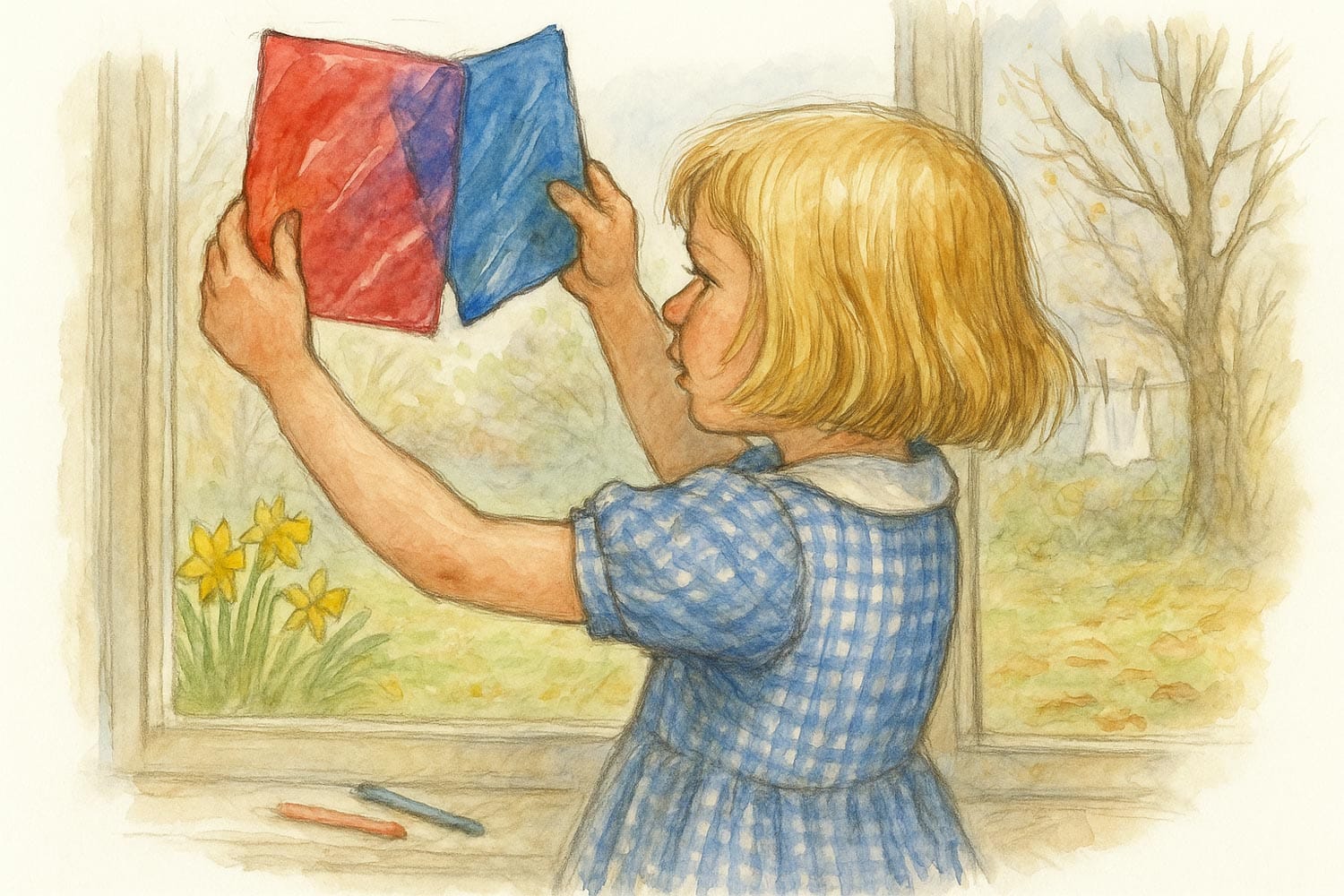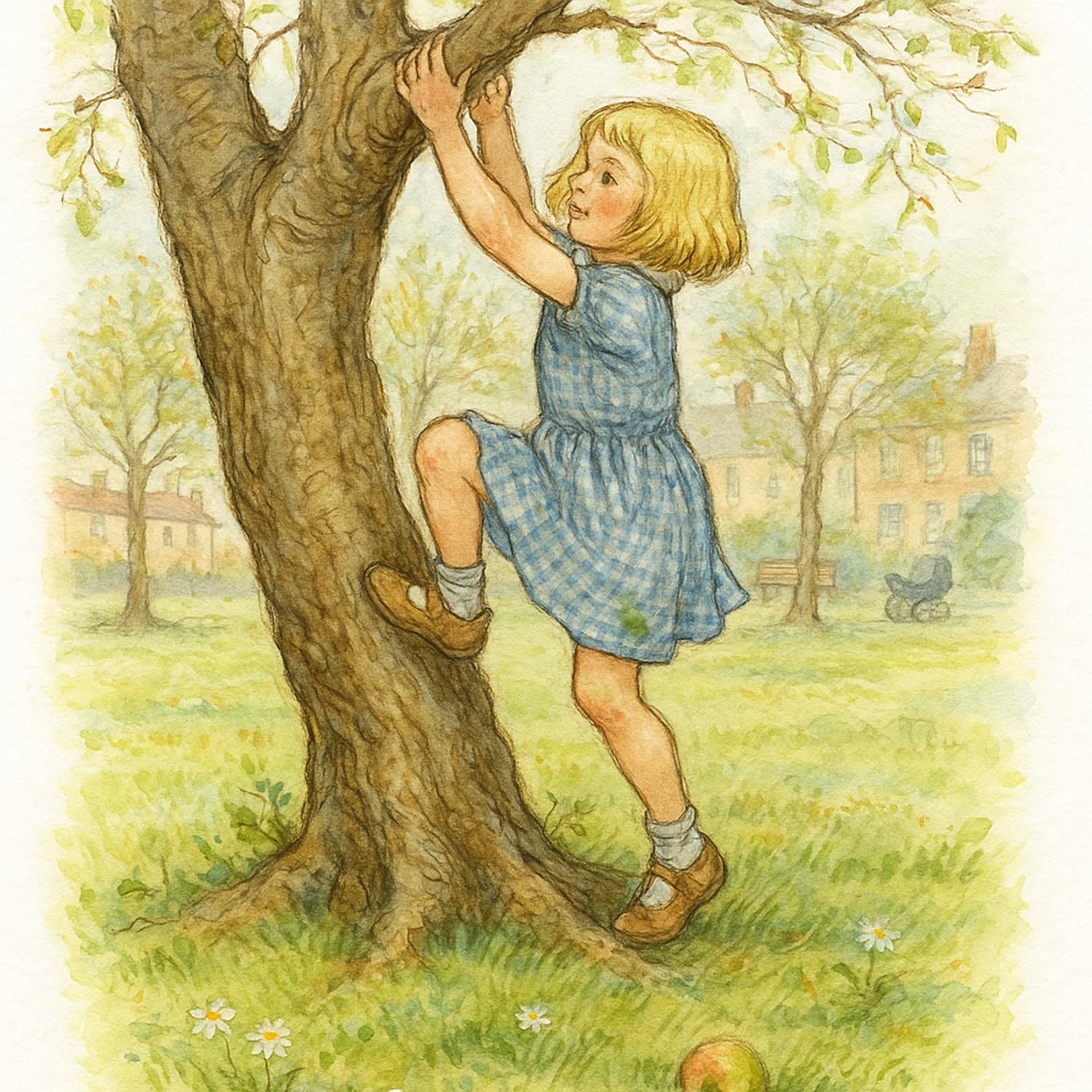Nutritious play: Does your child get her five-a-day?

Why am I here? Why am I doing this to myself?
I'm wearing shorts and a singlet. It's February and the mud is knee deep.
Correction. The mud will be knee deep once it thaws. Right now, it's frozen solid in ankle-turning ruts.
I'm standing at the foot of Parliament Hill in London and it's the National Cross Country Championships.
As I wait for the starting gun to fire, my thoughts turn to my dad.
He stood in this very spot, decades earlier. He ran the same race.
He came fourth.
And boy did I never hear the end of it!
So, in news that will surprise no-one, in a not-very-well-disguised attempt to live up to his expectations, I started running too.
But I started in my 30s. And though I trained hard, my body wasn't strong. Not in the kind of whole-body way you need when you're dragging yourself through mud, turning sharply, leaping, slogging and pelting downhill.
There was no glorious finish. No last-ditch sprint to get into the medals.
I came 1372nd.
Sorry, Dad.
Truth is, I never stood a chance.
Niggling injuries had plagued my preparation. I neglected my core and the gym. I couldn't stay fit enough for long enough to get faster.
True fitness
There's no triumphant end to this tale. That was the last time I raced.
But there was a silver lining: I realised that I had to take whole-body fitness more seriously. Being strong in only one dimension isn't real strength. So I dialled back the running and added weight training, yoga, swimming and meditation. Plus core work, more sleep and a better diet.
I wasn't as fast - but I felt a lot better.
Then I came across Katy Bowman and her philosophy of 'nutritious movement'. Rather than squeezing everything into a frenzied hour at the gym, she argues we should have 'movement snacks' throughout the day. These are varied, natural movements that feed our bodies the full spectrum of motion they need. Squatting whilst waiting for the kettle. Walking on uneven surfaces. Carrying heavy things in different ways. Movement, she argues, should be as varied as our dinner plate.
My running obsession was like living on protein powder. Technically fitness, but missing everything my body actually needed.
What does this have to do with your child?
Think about your child's typical day for a moment. What kinds of play does she enjoy - and what does she avoid?
In the same way as I was a one-dimensional athlete, could your child's play be one-dimensional too?
Is she missing out on her play 'five-a-day'? And what is the developmental cost?
Evolutionary psychologist Peter Gray's research shows that children are naturally designed to seek out exactly the variety of play experiences they need for healthy development. In hunter-gatherer societies, children engage in an extraordinary range of play types throughout their day - from rough-and-tumble wrestling to quiet storytelling, from solo exploration to complex group negotiations.
But modern life often constrains this natural variety. We live in environments that may offer abundant opportunities for certain types of play whilst making others nearly impossible to access.
The 16 play types: Your child's complete play menu
Research from Bob Hughes, who spent decades observing children's play, identified sixteen distinct types of play - each serving different developmental functions. Think of them as the equivalent of different food groups, each essential for healthy growth.
When you look at this list, which types does your child enjoy? Are there any she never tried?
The goal isn't to create a play curriculum. You don’t have to follow it religiously. Just take a look from time to time and ask yourself: when was the last time my child explored this type of play? If it’s been a while, see what you can do to reintroduce it.
1. Symbolic Play - Using objects to represent other things. 2. Rough and Tumble Play - Physical contact play involving wrestling, tickling, and gauging strength. 3. Socio-dramatic Play - Acting out the child's real-life experiences and relationships, and processing the strong emotions that go with them. 4. Social Play - Any game requiring turn-taking, rule-making, or group cooperation.5. Creative Play - Drawing, building with blocks, crafting with natural materials, designing inventions.6. Communication Play - Play involving words, sounds, and gestures: songs, jokes, secret languages, storytelling.7. Dramatic Play - Presenting events the child hasn't directly experienced. Re-enacting films, performing news events, staging historical scenes.8. Locomotor Play - Movement for its own sake. Running, jumping, climbing, dancing, spinning until dizzy.9. Deep Play - Climbing high, balancing on narrow surfaces, taking risks10. Exploratory Play - Investigating materials, .e.g. using a treasure basket.11. Fantasy Play - Pretend play about imaginary things..12. Imaginative Play - Pretend play about real things13. Mastery Play - Changing the physical environment. building dams, rearranging furniture.14. Object Play - Exploring objects to discover their properties and possibilities. 15. Role Play16. Recapitulative Play - Prehistoric play. The things we have naturally enjoyed for millennia: building dens, playing with shadows, singing and chasing .
1. Symbolic Play - Using objects to represent other things. A wooden spoon becomes a microphone, a cardboard box transforms into a rocket ship.
2. Rough and Tumble Play - Physical contact play involving wrestling, tickling, and gauging strength. Rolling around on the grass, gentle wrestling matches, pillow fights.
3. Socio-dramatic Play - Acting out real-life experiences and relationships. Acting out the child's real-life experiences and relationships, and processing the strong emotions that go with them.
4. Social Play - Play where social rules and interactions are explored and negotiated. Any game requiring turn-taking, rule-making, or group cooperation.
5. Creative Play - Making and transforming materials for the joy of creation. Drawing, building with blocks, crafting with natural materials, designing inventions.

6. Communication Play - Play involving words, sounds, and gestures. Making up songs, telling jokes, creating secret languages, storytelling.
7. Dramatic Play - Retelling events for an audience: re-enacting films, performing news events, staging historical scenes.
8. Locomotor Play - Movement for its own sake. Running, jumping, climbing, dancing, spinning until dizzy.

9. Deep Play - Risky play that helps children overcome fears and test limits. Climbing high, balancing on narrow surfaces, controlled "scary" experiences.
10. Exploratory Play - Investigating how things work through manipulation. Taking things apart, mixing substances, testing cause and effect.
11. Fantasy Play - Pretend play where normal rules don't apply: becoming a superhero, talking to imaginary creatures, magical transformations.
12. Imaginative Play - Pretend play that's linked to reality: pretending to be a doctor or a firefighter.
13. Mastery Play - Controlling and changing the physical environment. Building dams in streams, constructing forts, rearranging furniture.
14. Object Play - Manipulating objects to discover their properties and possibilities. Stacking, sorting, banging, throwing, examining textures.
15. Role Play - Exploring different ways of being through role adoption. Pretending to be different animals, trying out various jobs, embodying characters.
16. Recapitulative Play - Hughes believed that there is something primal within us that is drawn to ancestral activities. We have an urge to build fires (with the help of an adult!), play with shadows, make shelters, chant and create rituals.
Your weekly play reflection
Rather than trying to tick off all sixteen types daily, what if you used them as a weekly checklist?
At the end of each week, take five minutes to notice:
- Which types appeared naturally in your child's play?
- Which were entirely absent?
- Is there something you could change that would nudge your child towards something new?
The goal isn't balance for balance's sake. All children have preferences. The important thing is to have choice rather than emerge from genuine choice rather than environmental limitation.
Final word
A rich play diet enables your child to develop a wide range of interconnected skills.
As parents, it's easy to compartmentalise these skills: letter formation, climbing and executive functions seem to have very little in common.
But how can you learn to write if your hand fatigues too soon thanks to a weak grip? And what good is a knowledge of letter shapes if you can't hold them in working memory long enough to form words?
'Walking the tightrope' along a low wall on your way to the shops is vital for reading. Better balance helps the eyes track words on the page without losing their place but you won't find it in any reading or handwriting guide.
Peter Gray's research on free play shows that children naturally seek the variety they need when their environment supports it.
Our role is simply to offer a play space that asks the right questions.
Think back to the 16 types of play. Is there something that sticks out, something your child hasn't tried in a while?
Look around the room right now. Look at the furniture and the space, the surfaces and materials.
Set up a nudge and try a new type of play.
Comments ()